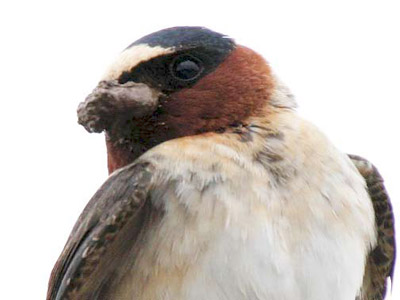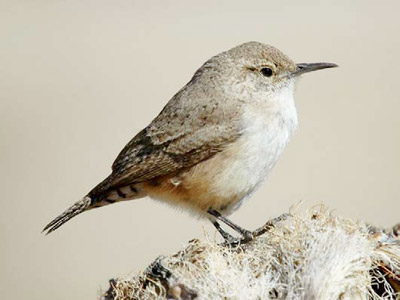Methods

© Robert Shantz
The New Mexico Natural Heritage Program conducted the bird inventory at Fort Union National Monument (NM). Fort Union NM is located on the southwestern edge of the Great Plains short-grass prairie in northeastern New Mexico. The monument contains 720 acres (291 hectares) of prairie habitat. Target bird species lists were created based on park checklists, field guides, other published literature, expert opinion, and park visits to confirm habitats. Breeding birds were then surveyed using linear point counts with distance sampling. Linear transects consisted of points at least 250 meters apart. Three transects in three habitats (grassland, one adjacent to pinyon-juniper, and one adjacent to wetland/riparian) were surveyed between May 30-31 and June 13-14, 2002. Habitats targeted for surveys outside of transects included areas around the residential area, the visitor center, the adobe structure remains, the sewage ponds, and the southwest monument boundary near Wolf Creek.
Status
Forty-eight bird species (or 92.3% of the final target list) were documented during the inventory. Twenty species (165 individual birds) were identified on point counts. Adjusted for the number of points in each habitat type (8 points in grassland, 2 in pinyon-juniper, and 4 in riparian), grasslands accounted for 10%, pinyon-juniper for 15%, and riparian points for 75% of all birds detected on point counts. These results were weighted by a riparian habitat point containing 80 perching brown-headed cowbirds (Molothrus ater). Reducing this flock to a single bird brought the total detections to 86 birds and adjusted total detections per habitat to 20% for grasslands, 21% for pinyon-juniper, and 59% for riparian points.

© Stephen Dowlan
The most frequently detected bird on point counts was the brown-headed cowbird (48.5% of detections) followed by the cliff swallow (Hirundo pyrrhonota; 13.3% of detections) and the Western meadowlark (Sturnella neglecta; 12.2% of detections). The average percentage of total detections for the remaining species was 1.5%. Mourning dove (Zenaida macroura) was the fourth most common species. Other birds detected were mallard (Anas platyrhynchos), Swainson’s hawk (Buteo swainsoni), killdeer (Charadrius vociferus), rock wren (Salpinctes obsoletus), mountain bluebird (Sialia currucoides), and Brewer’s blackbird (Euphagus cyanocephalus).
The absence of livestock grazing at Fort Union NM has facilitated increased diversity of grassland birds, especially ground and shrub nesting species such as vesper sparrow (Pooecetes gramineus) and lark sparrow (Chondestes grammacus). The stabilization of historical structures has also allowed nesting by several species favoring cavities for nest placement such as mountain bluebird and American kestrel (Falco sparverius). Canopy birds such as Bullock’s oriole (Icterus bullockii) and Western kingbird (Tyrannus verticalis) use several clusters of planted and naturally occurring deciduous trees. Modern building structures provide nesting substrates for species like the cliff swallow and Say’s phoebe (Sayornis saya).
Contacts
Kristine Johnson, Giancarlo Sadot, Gabor Racz, Josh Butler, and Yvonne Chauvin, Natural Heritage New Mexico.
Reference
Johnson K and Others. 2003. National Park Service Southern Plains Network Inventory Report for New Mexico Parks. Albuquerque, NM.
Prepared by the Southern Plains Network Inventory and Monitoring Program, 2015.
Part of a series of articles titled Southern Plains Bird Inventories.
Previous: Fort Larned Breeding Bird Inventory
Last updated: February 1, 2017
